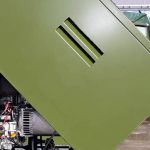1 Range and introduction
1.1 range
This specification specifies the processing requirements to be aware of when designing sheet metal structures.
This specification applies to processing requirements that must be adhered to in the design of sheet metal structures.
1.2 Introduction
The structural parts of our products are mainly made of sheet metal material. The shape, size, and accuracy of these stamping parts have a significant impact on the stamping process. Stamping parts have excellent processing technology, which is beneficial for saving materials, reducing processes, improving Mold life and product quality, and at the same time effectively reducing product costs.
According to the basic processing methods of sheet metal parts such as punching, bending, stretching and molding. This specification proposes restrictions on the structural design of sheet metal parts by explaining the process requirements that should be paid attention to in each type of processing.
1.3 Keywords
Sheet metal, punching, bending, stretching, molding, nesting, minimum bending radius, burrs, rebounds, dead sides
2 Citation standard
The terms in the following documents become the terms herein by reference. For dated references, all subsequent amendments (not including errata content) or revisions do not apply to this specification. However, the parties to the agreement under this Code are encouraged to consider the availability of the latest versions of these documents. For dateless references, the latest version applies to this specification.
3 bending
Bending can be divided into regular blanking and precision blanking. Due to the different machining methods, the machining characteristics of blanking parts are also different. At present, the structural parts of our telecommunications products generally use only normal punching. The following describes the blanking process, but refers to the structure of a normal Bending process.
3.1 The shape and size of the blank is as simple and symmetrical as possible to minimize waste during layout.
3.2 The shape of the bend and the inner hole should avoid sharp corners.
There must be an arc connection at the straight or curved connection, and the radius of the arc is R ≥ 0.5t. (T is the wall thickness of the material)
3.3 Bending parts should avoid narrow cantilever and slots
The depth and width of the convex or concave portion of the bending member should generally be at least 1.5t (t is the thickness of the material). At the same time, narrow slits and slits that are too small should be avoided to increase the edge strength of the corresponding parts of the Mold. See Figure 3.3.1.
3.4 Punch is suitable for round holes, the punch meets the minimum size requirement
Punches are suitable for circular holes. The minimum punch size is related to the shape of the hole, the mechanical properties of the material, and the thickness of the material.
* t is the thickness of the material, and the minimum punch size is generally 0.3 mm or more.
Table 1 List of minimum punching sizes
3.5 Punch hole spacing and hole margins
As shown in Figure 3.5.1, the minimum end-to-end distance of a part depends on the shape and hole of the part. If the punched edge is not parallel to the edge of the part, the minimum distance must be greater than or equal to the material thickness t. When parallel, it should be 1.5t or more.
3.6 When drilling holes by bending or deepening parts, the distance between the wall of the hole and the straight wall should be kept constant.
When bending or deep drawing
3.7 Screws, bolts and through-hole countersunk
The structural dimensions of screws, bolt holes, and countersunk seats are as shown in the table below. In the case of countersunk heads, if the plate is too thin to secure via d2 and counterbore hole D at the same time, via d2 should be guaranteed preferentially.
3.8 Blanking Bali Limits and Design Marks
3.8.1 Blanking Bali limit
The beam of the blanking part cannot exceed a certain height.
* F level (precision grade) for parts with high demand.
M level (medium grade) of medium demand parts.
The g level (rough grade) is applied to the parts that are generally required.
Table 5 Limitation of burr height of engraved parts
3.8.2 Burr marking requirements for design drawings
* Low edge direction: BURR SIDE.
* Parts that require burrs:
In general, do not break the entire structure at all pressure edges. The cost will increase. If you want to use as much as you can, do the following: A sharp edge that is often touched by human hands. A hole or slot that requires a cable. The part with relative slippage.
Please keep the source and address of this article for reprinting:Sheet metal structural parts machinability design specifications
Reprint Statement: If there are no special instructions, all articles on this site are original. Please indicate the source for reprinting.:Cnc Machine Wiki,Thanks!^^

